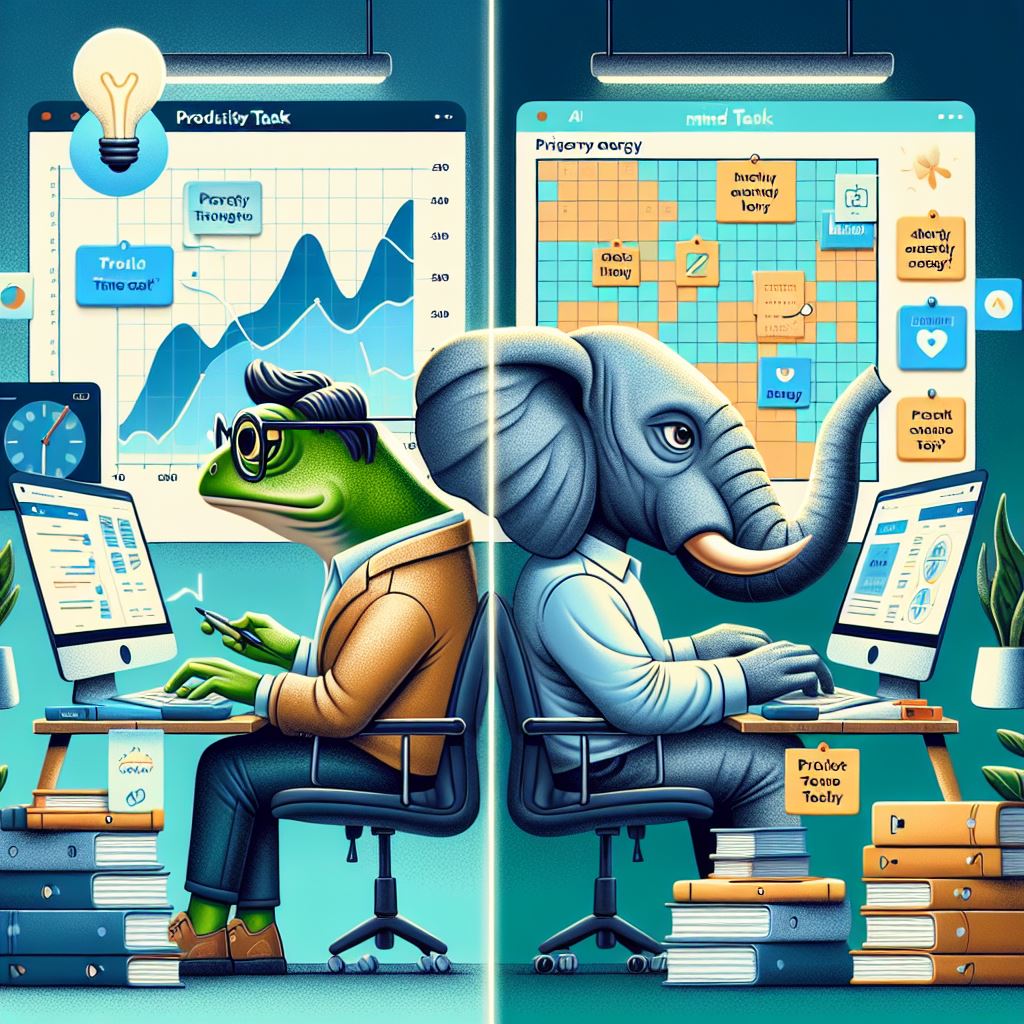
Two classic metaphors have helped people tackle productivity for years: eating the frog and eating the elephant. In today’s complex work environment, these ideas are more useful than ever—especially when paired with AI tools that help us work smarter, not just harder.
Eating Frogs: Matching Energy to Important Work
Your “frog” is that important task you keep avoiding. While many suggest doing it first thing in the morning, that’s not the whole story. The real insight is about matching your energy levels to your most important work—whenever that energy peaks for you.
AI can help by spotting patterns in how you work. By looking at your calendar entries, focus time blocks, and even anonymized data on when you typically complete tasks most efficiently, AI tools can identify when you’re naturally at your best. Some of us are morning people, others hit our stride mid-afternoon or evening.
Instead of blindly following the “do it first” rule, AI helps you schedule challenging work when you’re actually at your best. This simple shift can make a dramatic difference:
- Find the important tasks hiding in your never-ending to-do list with AI-powered prioritization that considers deadlines and impact
- Schedule hard work for when you’re typically most focused, guided by AI insights into your peak performance times
- Get starter outlines or relevant research snippets for complex tasks generated by AI, so beginning isn’t so daunting
- Block out time for important work before meetings fill your calendar, with AI suggesting optimal slots based on your energy patterns
Eating Elephants: Seeing the Whole Picture
The elephant metaphor—tackling big challenges one bite at a time—works well, but we often struggle to keep track of all the pieces. This is where AI really shines.
AI can analyse information scattered across emails, documents, chats, meeting notes, and more—giving you a clear picture of where things actually stand on big projects. Using natural language processing to identify sentiment and potential conflicts, AI helps you spot issues that normal updates would miss:
- Gaps in understanding between team members before they cause problems, highlighted by AI analysis of communication patterns
- Early warning signs that something isn’t working, flagged by AI detecting inconsistencies in reported progress and actual activity
- Hidden connections between different parts of a project, revealed by AI that can cross-reference information across various sources
- Places where what people say they’re doing doesn’t match where they’re spending time, identified by AI comparing task assignments with activity logs
- Important information trapped with just one person or team, surfaced by AI that can identify isolated pockets of knowledge
With this clearer picture, you can fix small issues before they become big problems and keep everyone moving in the same direction based on what’s actually happening, not just what’s in the official updates.
Putting It All Together: A Simple System
When you combine these approaches, you get a practical system:
- Find your best times: Use AI to identify when you’re naturally most focused, creative, or communicative by analysing your work patterns
- Match tasks to energy: Do your most important work when you’re at your best, guided by AI recommendations
- Block your calendar: Protect time for important work before it fills with meetings, with AI suggesting optimal scheduling
- Lower the starting hurdle: Have AI create outlines or gather information to make starting easier, reducing procrastination
- Keep the big picture: Regularly check what’s actually happening across all communications using AI-powered analysis
- Spot misalignments early: Identify when people are working with different assumptions, thanks to AI insights
How to Use This Tomorrow
Start with two simple questions:
First, “What’s my most important task today, and when am I typically at my best to tackle it?” You might review your calendar and notice you’re consistently most productive after your morning coffee but before the afternoon meeting rush.
Second, for big projects, ask AI: “Looking at all our emails, chats, and documents about Project X, what’s our actual status? Where do people disagree? What risks aren’t we talking about openly?”
The best leaders don’t just work harder or follow productivity rules blindly. They understand when they work best and match their most important contributions to those times. They also maintain a clear view of what’s really happening in complex projects.
With AI, you can do both better than ever before. It’s not about cramming more work into your day—it’s about doing the right work at the right time with the clearest possible understanding of what matters.
What works for you? Have you found good ways to use AI for tackling big tasks or keeping track of complex projects? Share your experiences in the comments.
#ProductivityHacks #AIforProductivity #WorkSmarter #TimeManagement #LeadershipTips #AITools #DigitalProductivity #WorkflowOptimization #FutureOfWork #AIAssistants #PeakPerformance #PriorityManagement #ProjectManagement #BusinessAI #ProductivityTips #SmartWork #AIStrategy #ExecutiveTips #DecisionMaking #WorkLifeBalance
Ger Perdisatt is CEO at Acuity AI Consulting , helping people and companies use AI in practical ways that actually improve how work gets done.